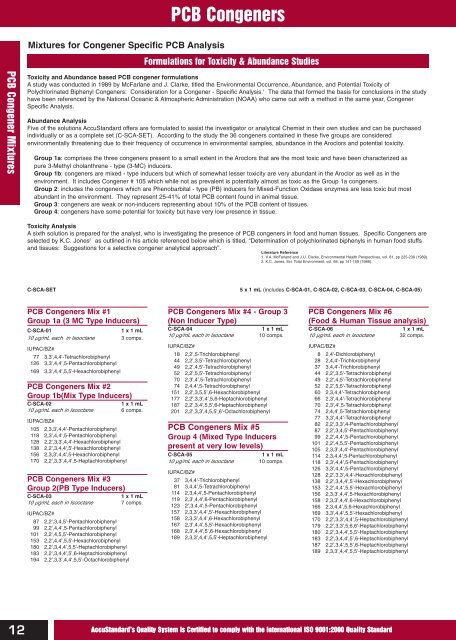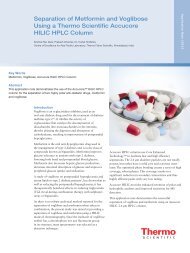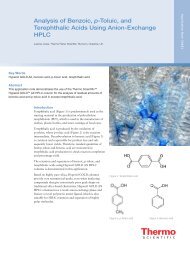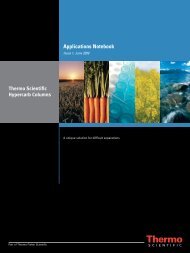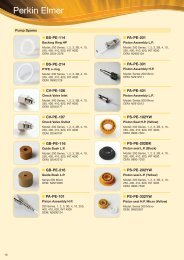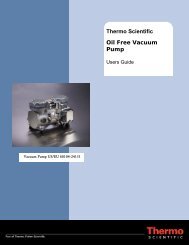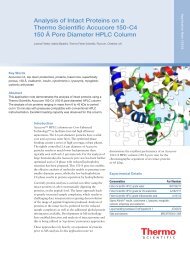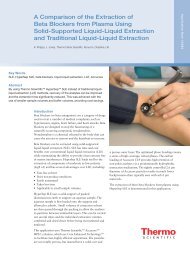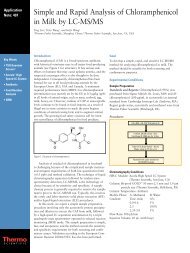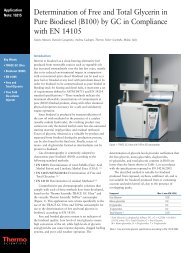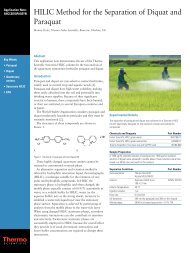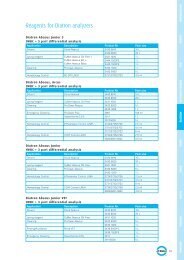PCB Congeners Mixtures for Congener Specific PCB Analysis Formulations for Toxicity & Abundance Studies PCB Congener Mixtures Toxicity and Abundance based PCB congener formulations A study was conducted in 1989 by McFarlane and J. Clarke, titled the Environmental Occurrence, Abundance, and Potential Toxicity of Polychlorinated Biphenyl Congeners: Consideration for a Congener - Specific Analysis. 1 The data that formed the basis for conclusions in the study have been referenced by the National Oceanic & Atmospheric Administration (NOAA) who came out with a method in the same year, Congener Specific Analysis. Abundance Analysis Five of the solutions AccuStandard offers are formulated to assist the investigator or analytical Chemist in their own studies and can be purchased individually or as a complete set (C-SCA-SET). According to the study the 36 congeners contained in these five groups are considered environmentally threatening due to their frequency of occurrence in environmental samples, abundance in the Aroclors and potential toxicity. Group 1a: comprises the three congeners present to a small extent in the Aroclors that are the most toxic and have been characterized as pure 3-Methyl cholanthrene - type (3-MC) inducers. Group 1b: congeners are mixed - type inducers but which of somewhat lesser toxicity are very abundant in the Aroclor as well as in the environment. It includes Congener # 105 which while not as prevalent is potentially almost as toxic as the Group 1a congeners. Group 2: includes the congeners which are Phenobarbital - type (PB) inducers for Mixed-Function Oxidase enzymes are less toxic but most abundant in the environment. They represent 25-41% of total PCB content found in animal tissue. Group 3: congeners are weak or non-inducers representing about 10% of the PCB content of tissues. Group 4: congeners have some potential for toxicity but have very low presence in tissue. Toxicity Analysis A sixth solution is prepared for the analyst, who is investigating the presence of PCB congeners in food and human tissues. Specific Congeners are selected by K.C. Jones 2 as outlined in his article referenced below which is titled, “Determination of polychlorinated biphenyls in human food stuffs and tissues: Suggestions for a selective congener analytical approach”. Literature <strong>Reference</strong> 1. V.A. McFarland and J.U. Clarke, Environmental Health Perspectives, vol. 81, pp 225-239 (1989). 2. K.C. Jones, Sci. Total Environment, vol. 68, pp 141-159 (1988). C-SCA-SET $ 120 / 5 x 1 mL (includes C-SCA-01, C-SCA-02, C-SCA-03, C-SCA-04, C-SCA-05) PCB Congeners Mix #1 Group 1a (3 MC Type Inducers) C-SCA-01 $ 30 / 1 x 1 mL 10 µg/mL each in Isooctane 3 comps. IUPAC/BZ# 77 3,3',4,4'-Tetrachlorobiphenyl 126 3,3',4,4',5-Pentachlorobiphenyl 169 3,3',4,4',5,5'-Hexachlorobiphenyl PCB Congeners Mix #2 Group 1b(Mix Type Inducers) C-SCA-02 $ 30 / 1 x 1 mL 10 µg/mL each in Isooctane 6 comps. IUPAC/BZ# 105 2,3,3',4,4'-Pentachlorobiphenyl 118 2,3',4,4',5-Pentachlorobiphenyl 128 2,2',3,3',4,4'-Hexachlorobiphenyl 138 2,2',3,4,4',5'-Hexachlorobiphenyl 156 2,3,3',4,4',5-Hexachlorobiphenyl 170 2,2',3,3',4,4',5-Heptachlorobiphenyl PCB Congeners Mix #3 Group 2(PB Type Inducers) C-SCA-03 $ 30 / 1 x 1 mL 10 µg/mL each in Isooctane 7 comps. IUPAC/BZ# 87 2,2',3,4,5'-Pentachlorobiphenyl 99 2,2',4,4',5-Pentachlorobiphenyl 101 2,2',4,5,5'-Pentachlorobiphenyl 153 2,2',4,4',5,5'-Hexachlorobiphenyl 180 2,2',3,4,4',5,5'-Heptachlorobiphenyl 183 2,2',3,4,4',5',6-Heptachlorobiphenyl 194 2,2',3,3',4,4',5,5'-Octachlorobiphenyl PCB Congeners Mix #4 - Group 3 (Non Inducer Type) C-SCA-04 $ 35 / 1 x 1 mL 10 µg/mL each in Isooctane 10 comps. IUPAC/BZ# 18 2,2',5-Trichlorobiphenyl 44 2,2',3,5'-Tetrachlorobiphenyl 49 2,2',4,5'-Tetrachlorobiphenyl 52 2,2',5,5'-Tetrachlorobiphenyl 70 2,3',4',5-Tetrachlorobiphenyl 74 2,4,4',5-Tetrachlorobiphenyl 151 2,2',3,5,5',6-Hexachlorobiphenyl 177 2,2',3,3',4',5,6-Heptachlorobiphenyl 187 2,2',3,4',5,5',6-Heptachlorobiphenyl 201 2,2',3,3',4,5,5',6'-Octachlorobiphenyl PCB Congeners Mix #5 Group 4 (Mixed Type Inducers present at very low levels) C-SCA-05 $ 35 / 1 x 1 mL 10 µg/mL each in Isooctane 10 comps. IUPAC/BZ# 37 3,4,4'-Trichlorobiphenyl 81 3,4,4',5-Tetrachlorobiphenyl 114 2,3,4,4',5-Pentachlorobiphenyl 119 2,3',4,4',6-Pentachlorobiphenyl 123 2',3,4,4',5-Pentachlorobiphenyl 157 2,3,3',4,4',5'-Hexachlorobiphenyl 158 2,3,3',4,4',6-Hexachlorobiphenyl 167 2,3',4,4',5,5'-Hexachlorobiphenyl 168 2,3',4,4',5',6-Hexachlorobiphenyl 189 2,3,3',4,4',5,5'-Heptachlorobiphenyl PCB Congeners Mix #6 (Food & Human Tissue analysis) C-SCA-06 $ 60 / 1 x 1 mL 10 µg/mL each in Isooctane 32 comps. IUPAC/BZ# 8 2,4'-Dichlorobiphenyl 28 2,4,4'-Trichlorobiphenyl 37 3,4,4'-Trichlorobiphenyl 44 2,2',3,5'-Tetrachlorobiphenyl 49 2,2',4,5'-Tetrachlorobiphenyl 52 2,2',5,5'-Tetrachlorobiphenyl 60 2,3,4,4'-Tetrachlorobiphenyl 66 2,3',4,4'-Tetrachlorobiphenyl 70 2,3',4',5-Tetrachlorobiphenyl 74 2,4,4',5-Tetrachlorobiphenyl 77 3,3',4,4'-Tetrachlorobiphenyl 82 2,2',3,3',4-Pentachlorobiphenyl 87 2,2',3,4,5'-Pentachlorobiphenyl 99 2,2',4,4',5-Pentachlorobiphenyl 101 2,2',4,5,5'-Pentachlorobiphenyl 105 2,3,3',4,4'-Pentachlorobiphenyl 114 2,3,4,4',5-Pentachlorobiphenyl 118 2,3',4,4',5-Pentachlorobiphenyl 126 3,3',4,4',5-Pentachlorobiphenyl 128 2,2',3,3',4,4'-Hexachlorobiphenyl 138 2,2',3,4,4',5'-Hexachlorobiphenyl 153 2,2',4,4',5,5'-Hexachlorobiphenyl 156 2,3,3',4,4',5-Hexachlorobiphenyl 158 2,3,3',4,4',6-Hexachlorobiphenyl 166 2,3,4,4',5,6-Hexachlorobiphenyl 169 3,3',4,4',5,5'-Hexachlorobiphenyl 170 2,2',3,3',4,4',5-Heptachlorobiphenyl 179 2,2',3,3',5,6,6'-Heptachlorobiphenyl 180 2,2',3,4,4',5,5'-Heptachlorobiphenyl 183 2,2',3,4,4',5',6-Heptachlorobiphenyl 187 2,2',3,4',5,5',6-Heptachlorobiphenyl 189 2,3,3',4,4',5,5'-Heptachlorobiphenyl 12 AccuStandard’s Quality System is Certified to comply with the International ISO 9001:2000 Quality Standard
PCB Congeners Mixtures for Congener Specific PCB Analysis Canadian Methods - PCB Congeners (Canadian RM) A set of four formulations has been selected by the Institute for Biological Sciences of Canada and can be purchased individually or as a complete set (C-CAN-SET). The concentration levels for these formulations are selected so that 1 mL of standard diluted into 100 mL will show equal response by ECD. C-CAN-SET PCB Congeners Mix #1 C-CAN-01 $ 45 / 1 x 1 mL At stated conc. in Isooctane 14 comps. IUPAC/BZ# µg/mL 18 2,2',5-Trichlorobiphenyl 11.8 31 2,4',5-Trichlorobiphenyl 6.6 40 2,2',3,3'-Tetrachlorobiphenyl 4.9 44 2,2',3,5'-Tetrachlorobiphenyl 5.9 49 2,2',4,5'-Tetrachlorobiphenyl 7.6 54 2,2',6,6'-Tetrachlorobiphenyl 16.6 77 3,3',4,4'-Tetrachlorobiphenyl 5.5 86 2,2',3,4,5-Pentachlorobiphenyl 2.9 87 2,2',3,4,5'-Pentachlorobiphenyl 3.8 121 2,3',4,5',6-Pentachlorobiphenyl 3.1 153 2,2',4,4',5,5'-Hexachlorobiphenyl 2.1 156 2,3,3',4,4',5-Hexachlorobiphenyl 1.5 159 2,3,3',4,5,5'-Hexachlorobiphenyl 1.2 209 2,2',3,3',4,4',5,5',6,6'-Decachlorobiphenyl 1.7 $ 150 / 4 x 1 mL (includes C-CAN-01, C-CAN-02, C-CAN-03, C-CAN-04) PCB Congeners Mix #2 C-CAN-02 $ 45 / 1 x 1 mL At stated conc. in Isooctane 15 comps. IUPAC/BZ# µg/mL 15 4,4'-Dichlorobiphenyl 91.9 52 2,2',5,5'-Tetrachlorobiphenyl 15.2 60 2,3,4,4'-Tetrachlorobiphenyl 3.9 103 2,2',4,5',6-Pentachlorobiphenyl 10.8 105 2,3,3',4,4'-Pentachlorobiphenyl 4 128 2,2',3,3',4,4'-Hexachlorobiphenyl 4.9 143 2,2',3,4,5,6'-Hexachlorobiphenyl 5.7 154 2,2',4,4',5,6'-Hexachlorobiphenyl 6.2 173 2,2',3,3',4,5,6-Heptachlorobiphenyl 2.3 182 2,2',3,4,4',5,6'-Heptachlorobiphenyl 3.8 202 2,2',3,3',5,5',6,6'-Octachlorobiphenyl 3.6 205 2,3,3',4,4',5,5',6-Octachlorobiphenyl 3.2 207 2,2',3,3',4,4',5,6,6'-Nonachlorobiphenyl 3.8 208 2,2',3,3',4,5,5',6,6'-Nonachlorobiphenyl 2.4 209 2,2',3,3',4,4',5,5',6,6'-Decachlorobiphenyl 2.8 PCB Congener Mixtures PCB Congeners Mix #3 C-CAN-03 $ 45 / 1 x 1 mL At stated conc. in Isooctane 15 comps. IUPAC/BZ# µg/mL 15 4,4'-Dichlorobiphenyl 138.1 114 2,3,4,4',5-Pentachlorobiphenyl 6.3 129 2,2',3,3',4,5-Hexachlorobiphenyl 8.3 137 2,2',3,4,4',5-Hexachlorobiphenyl 7.4 153 2,2',4,4',5,5'-Hexachlorobiphenyl 7.3 171 2,2',3,3',4,4',6-Heptachlorobiphenyl 5.2 183 2,2',3,4,4',5',6-Heptachlorobiphenyl 6.6 185 2,2',3,4,5,5',6-Heptachlorobiphenyl 3.5 189 2,3,3',4,4',5,5'-Heptachlorobiphenyl 4.7 191 2,3,3',4,4',5',6-Heptachlorobiphenyl 5 200 2,2',3,3',4,5',6,6'-Octachlorobiphenyl 7 201 2,2',3,3',4,5,5',6'-Octachlorobiphenyl 4.8 203 2,2',3,4,4',5,5',6-Octachlorobiphenyl 5.1 206 2,2',3,3',4,4',5,5',6-Nonachlorobiphenyl 6.7 209 Decachlorobiphenyl 5.1 PCB Congeners Mix #4 C-CAN-04 $ 45 / 1 x 1 mL At stated conc. in Isooctane 15 comps. IUPAC/BZ# µg/mL 14 4,4'-Dichlorobiphenyl 76.7 101 2,2',4,5,5'-Pentachlorobiphenyl 8.9 118 2,3',4,4',5-Pentachlorobiphenyl 3.9 138 2,2',3,4,4',5'-Hexachlorobiphenyl 4.2 141 2,2',3,4,5,5'-Hexachlorobiphenyl 2.8 151 2,2',3,5,5',6-Hexachlorobiphenyl 5 153 2,2',4,4',5,5'-Hexachlorobiphenyl 3.3 170 2,2',3,3',4,4',5-Heptachlorobiphenyl 3 180 2,2',3,4,4',5,5'-Heptachlorobiphenyl 2.8 187 2,2',3,4',5,5',6-Heptachlorobiphenyl 3.2 194 2,2',3,3',4,4',5,5'-Octachlorobiphenyl 2.4 195 2,2',3,3',4,4',5,6-Octachlorobiphenyl 2.6 196 2,2',3,3',4,4',5',6-Octachlorobiphenyl 3.3 201 2,2',3,3',4,5,5',6'-Octachlorobiphenyl 3.6 209 Decachlorobiphenyl 2.7 Quebec Ministry of Environment Congener Mix C-QME-01 At stated conc. in Isooctane IUPAC/BZ# ng/mL 17 2,2',4-Trichlorobiphenyl 500 18 2,2',5-Trichlorobiphenyl 2000 28 2,4,4'-Trichlorobiphenyl 2000 31 2,4',5-Trichlorobiphenyl 1500 33 2',3,4-Trichlorobiphenyl 2000 44 2,2',3,5'-Tetrachlorobiphenyl 2000 49 2,2',4,5'-Tetrachlorobiphenyl 2000 52 2,2',5,5'-Tetrachlorobiphenyl 2000 70 2,3',4',5-Tetrachlorobiphenyl 2000 74 2,4,4',5-Tetrachlorobiphenyl 2000 82 2,2',3,3',4-Pentachlorobiphenyl 500 87 2,2',3,4,5'-Pentachlorobiphenyl 2000 95 2,2',3,5',6-Pentachlorobiphenyl 1000 99 2,2',4,4',5-Pentachlorobiphenyl 2000 101 2,2',4,5,5'-Pentachlorobiphenyl 2000 105 2,3,3',4,4'-Pentachlorobiphenyl 500 110 2,3,3',4',6-Pentachlorobiphenyl 2000 118 2,3',4,4',5-Pentachlorobiphenyl 2000 128 2,2',3,3',4,4'-Hexachlorobiphenyl 2000 132 2,2',3,3',4,6'-Hexachlorobiphenyl 1000 138 2,2',3,4,4',5'-Hexachlorobiphenyl 2000 $ 125 / 1 x 1 mL 41 comps. IUPAC/BZ# ng/mL 149 2,2',3,4',5',6-Hexachlorobiphenyl 2000 151 2,2',3,5,5',6-Hexachlorobiphenyl 2000 153 2,2',4,4',5,5'-Hexachlorobiphenyl 2000 156 2,3,3',4,4',5-Hexachlorobiphenyl 2000 158 2,3,3',4,4',6-Hexachlorobiphenyl 500 169 3,3',4,4',5,5'-Hexachlorobiphenyl 2000 170 2,2',3,3',4,4',5-Heptachlorobiphenyl 2000 171 2,2',3,3',4,4',6-Heptachlorobiphenyl 2000 177 2,2',3,3',4',5,6-Heptachlorobiphenyl 2000 180 2,2',3,4,4',5,5'-Heptachlorobiphenyl 2000 183 2,2',3,4,4',5',6-Heptachlorobiphenyl 2000 187 2,2',3,4',5,5',6-Heptachlorobiphenyl 2000 191 2,3,3',4,4',5',6-Heptachlorobiphenyl 2000 194 2,2',3,3',4,4',5,5'-Octachlorobiphenyl 2000 195 2,2',3,3',4,4',5,6-Octachlorobiphenyl 2000 199/201 2,2',3,3',4,5,5',6'-Octachlorobiphenyl 1500 205 2,3,3',4,4',5,5',6-Octachlorobiphenyl 2000 206 2,2',3,3',4,4',5,5',6-Nonachlorobiphenyl 2000 208 2,2',3,3',4,5,5',6,6'-Nonachlorobiphenyl 2000 209 Decachlorobiphenyl 2000 For MSDSs visit our website at www.AccuStandard.com 13
- Page 1 and 2: Chemical Reference Standards INTERN
- Page 3 and 4: PRINTED ON RECYCLED PAPER Table of
- Page 5 and 6: AccuStandard, At Your Service Inter
- Page 7 and 8: PCBs AccuStandard is known througho
- Page 9 and 10: PCB Congeners Individual PCB Congen
- Page 11 and 12: PCB Congeners Individual PCB Congen
- Page 13 and 14: PCB Congeners Individual PCB Congen
- Page 15 and 16: PCB Congeners Individual PCB Congen
- Page 17: PCB Congeners EU Formulations PCB C
- Page 21 and 22: PCB Congeners Mixtures for Congener
- Page 23 and 24: PCB Congeners Mixtures for Congener
- Page 25 and 26: PCB Congeners PCB Congener Calibrat
- Page 27 and 28: PCB Metabolites & Derivatives Indiv
- Page 29 and 30: Aroclors Individual Aroclors (in 1
- Page 31 and 32: Flame Retardants Individual PBDEs S
- Page 33 and 34: Flame Retardants Method 1614 Polybr
- Page 35 and 36: Flame Retardants Other Flame Retard
- Page 37 and 38: Dibenzofurans Individual Dibenzofur
- Page 39 and 40: PAHs & Derivatives Individual PAHs
- Page 41 and 42: PAHs & Derivatives Individual PAHs
- Page 43 and 44: PAHs & Derivatives Individual PAHs
- Page 45 and 46: Nitroaromatics Individual Nitroarom
- Page 47 and 48: Aliphatic & Aromatic Amines & Deriv
- Page 49 and 50: Nitrogen Containing Compounds Nitro
- Page 51 and 52: Pesticides & Herbicides Pesticides,
- Page 53 and 54: Pesticides & Herbicides Pesticides
- Page 55 and 56: Pesticides & Herbicides Pesticides
- Page 57 and 58: Pesticides & Herbicides Pesticides
- Page 59 and 60: Pesticides & Herbicides Pesticides
- Page 61 and 62: Pesticides & Herbicides Pesticides
- Page 63 and 64: Pesticides & Herbicides Pesticides
- Page 65 and 66: Pesticides & Herbicides Pesticides
- Page 67 and 68: Pesticides & Herbicides Pesticides
- Page 69 and 70:
Pesticides & Herbicides Pesticides
- Page 71 and 72:
Pesticides & Herbicides Pesticides
- Page 73 and 74:
Pesticides & Herbicides Pesticides
- Page 75 and 76:
Pesticides & Herbicides Pesticides
- Page 77 and 78:
Pesticides & Herbicides Pesticides
- Page 79 and 80:
Pesticides & Herbicides Pesticides
- Page 81 and 82:
Pesticides & Herbicides Pesticides
- Page 83 and 84:
Pesticides & Herbicides Pesticides
- Page 85 and 86:
Pesticides & Herbicides Pesticides
- Page 87 and 88:
Pesticides & Herbicides The followi
- Page 89 and 90:
Pesticides & Herbicides Method 531
- Page 91 and 92:
Volatiles Volatile Organic Compound
- Page 93 and 94:
Volatiles Volatiles (in 1 mL of sol
- Page 95 and 96:
Volatiles Volatiles (in 1 mL of sol
- Page 97 and 98:
Volatiles Volatiles (in 1 mL of sol
- Page 99 and 100:
Volatiles Chlorinated Organic Volat
- Page 101 and 102:
Volatiles USEPA Method 503.1 Purgea
- Page 103 and 104:
Volatiles USEPA Method 8010, 8010A
- Page 105 and 106:
Volatiles USEPA Method 8021B Purgea
- Page 107 and 108:
Volatiles USEPA Method 8240 & 8260
- Page 109 and 110:
Volatiles VOC Selected Target Compo
- Page 111 and 112:
Phenols & Derivatives Phenols & Der
- Page 113 and 114:
Phenols & Derivatives Method 8040A
- Page 115 and 116:
Alcohols Alcohols (in 1 mL of solve
- Page 117 and 118:
Aldehydes Method 554 Carbonyl Compo
- Page 119 and 120:
Ketones Ketones (in 1 mL of solvent
- Page 121 and 122:
Haloacetic Acids Haloacetic Acids (
- Page 123 and 124:
Refrigerants Refrigerants (CFCs) (i
- Page 125 and 126:
Fuel & Hydrocarbon Standards Fuels
- Page 127 and 128:
Fuel & Hydrocarbon Standards Gasoli
- Page 129 and 130:
Fuel & Hydrocarbon Standards Leakin
- Page 131 and 132:
Explosives Explosives (in 1 mL of s
- Page 133 and 134:
Allergens It has been estimated tha
- Page 135 and 136:
Allergens Allergens (in 1 mL of sol
- Page 137 and 138:
Allergens by Type COMPOUND CAS NO.
- Page 139 and 140:
Food Analysis Analytes for Food Ana
- Page 141 and 142:
Food Analysis ASTM Method D6042-92
- Page 143 and 144:
Food Analysis AOCS, Method Ce1-62 A
- Page 145 and 146:
Food Analysis Typically 98+% Pure,
- Page 147 and 148:
Perfluorooctanoic Miscellaneous & A
- Page 149 and 150:
Sulfur Please note that 4 ounces is
- Page 151 and 152:
Petrochemical The Petrochemical ind
- Page 153 and 154:
Physical Properties ASTM D-1319 Ole
- Page 155 and 156:
Petrochemical ASTM Standards ASTM D
- Page 157 and 158:
Petrochemical ASTM Standards ASTM D
- Page 159 and 160:
Petrochemical ASTM Standards ASTM D
- Page 161 and 162:
Petrochemical ASTM Standards ASTM D
- Page 163 and 164:
Petrochemical ASTM Standards ASTM D
- Page 165 and 166:
Petrochemical ASTM Standards ASTM D
- Page 167 and 168:
Petrochemical ASTM Standards ASTM D
- Page 169 and 170:
Petrochemical ASTM Standards ASTM D
- Page 171 and 172:
Petrochemical ASTM Standards ASTM D
- Page 173 and 174:
Petrochemical ASTM Standards ASTM D
- Page 175 and 176:
Petrochemical ASTM Standards ASTM D
- Page 177 and 178:
Petrochemical ASTM Standards ASTM D
- Page 179 and 180:
Petrochemical ASTM Standards ASTM D
- Page 181 and 182:
Petrochemical ASTM Standards ASTM D
- Page 183 and 184:
Petrochemical ASTM Standards Throug
- Page 185 and 186:
Petrochemical ASTM Standards ASTM D
- Page 187 and 188:
Petrochemical ASTM Standards ASTM D
- Page 189 and 190:
Inorganic Standards Single Element
- Page 191 and 192:
ICP NoHaz Size (No Hazardous shippi
- Page 193 and 194:
ICP NoHaz Size (No Hazardous shippi
- Page 195 and 196:
ICP ICP Multi-Element Standard Solu
- Page 197 and 198:
Plasma Emission / Mass Spectroscopy
- Page 199 and 200:
AA NoHaz Size (No Hazardous shippin
- Page 201 and 202:
Wear Metals These Standards were fo
- Page 203 and 204:
Ion Chromatography Ion Chrom - Anio
- Page 205 and 206:
CAS Number Index CAS # PAGE CAS # P
- Page 207 and 208:
CAS Number Index CAS # PAGE CAS # P
- Page 209 and 210:
Catalog Number Index CAT .NO. PAGE
- Page 211 and 212:
Catalog Number Index CAT .NO. PAGE
- Page 213 and 214:
Catalog Number Index CAT .NO. PAGE
- Page 215 and 216:
Catalog Number Index CAT .NO. PAGE
- Page 217 and 218:
Catalog Number Index CAT .NO. PAGE
- Page 219 and 220:
Catalog Number Index CAT .NO. PAGE
- Page 221 and 222:
Catalog Number Index CAT .NO. PAGE
- Page 223 and 224:
Catalog Number Index CAT .NO. PAGE
- Page 226 and 227:
Custom Quotation Request Form From:
- Page 228:
Chemical Reference Standards INTERN


